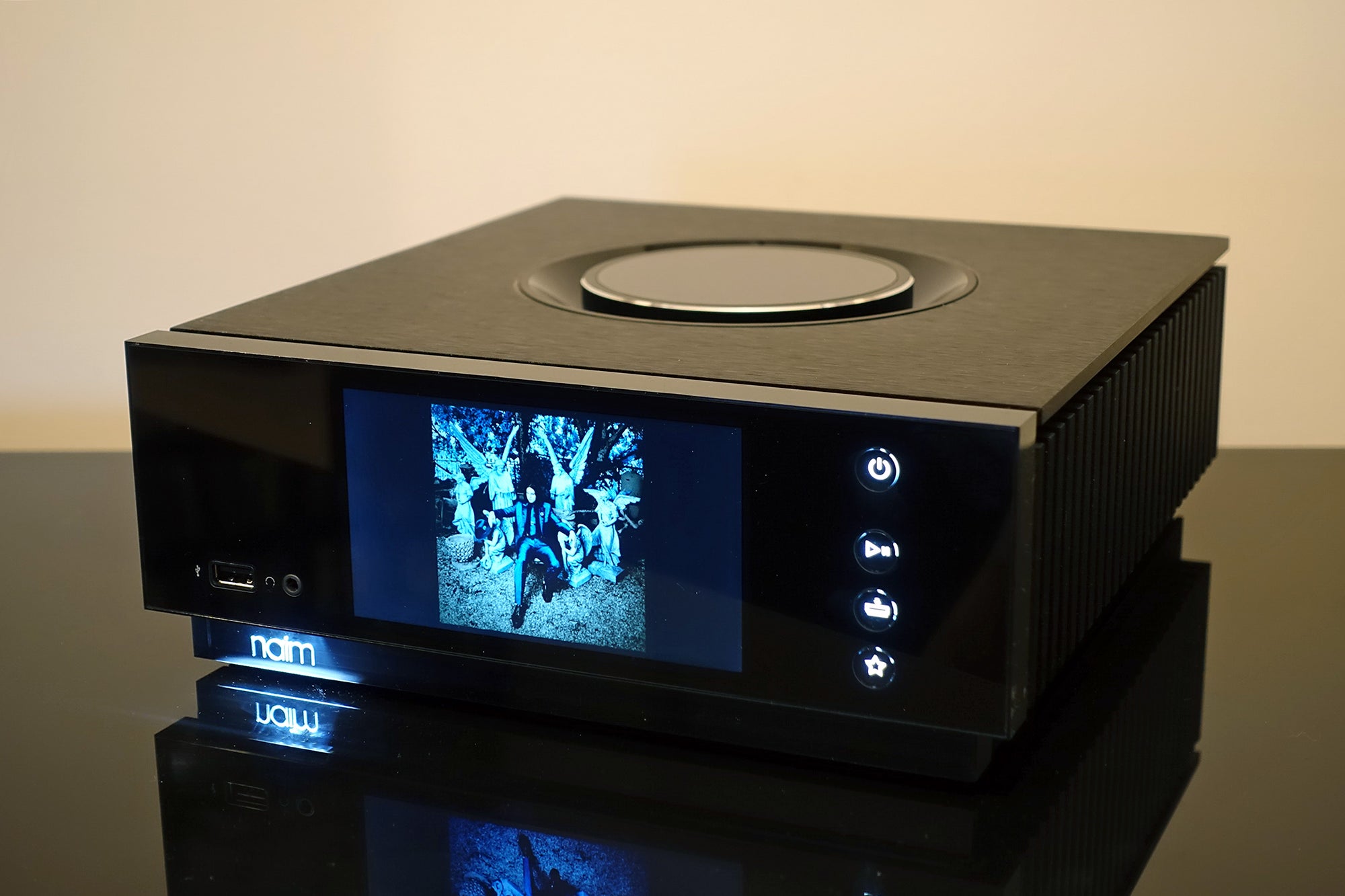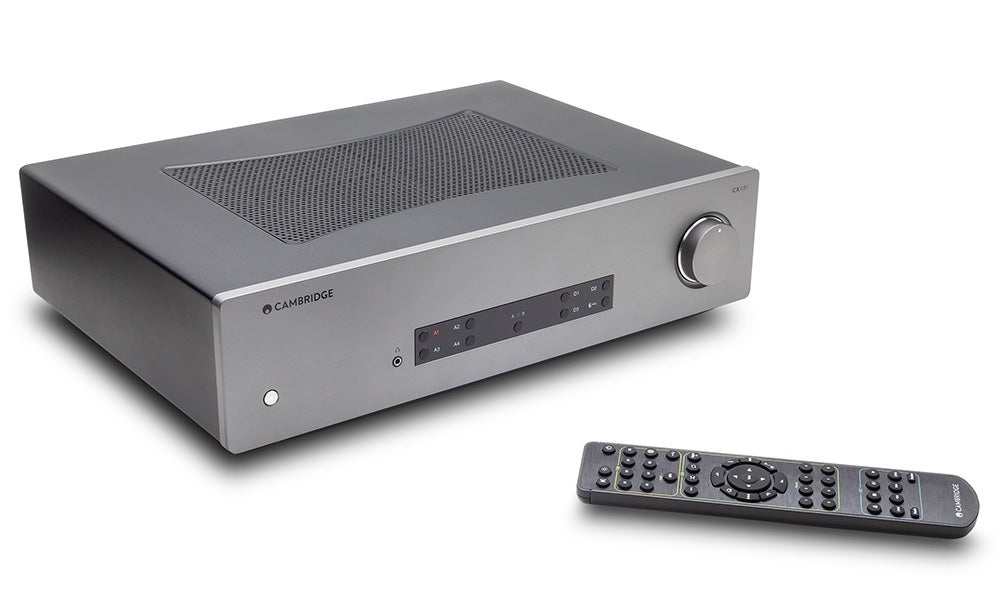FiiO M15S Review
High performance audio in the palm of your hand






Verdict
The FiiO M15S doesn’t exactly scream portable for a digital audio player, but for those who want to listen to their music library in greater detail, this is an accomplished and well-featured portable player, though Astell&Kern still has the edge in terms of sound quality.
Pros
- Warm but balanced audio
- Bright, colourful, and responsive screen
- Nice aesthetics (and case)
- Well stocked for connectivity
Cons
- Too big to be considered truly portable
- More expensive than its Astell&Kern rival
- Doesn’t sound as good as A&K either
Key Features
- GainFive levels of gain to drive headphone performance
- Dedicated desktop modeImprove audio quality with PC/Mac devices
- DACDesktop level ES9038PRO in a portable music player
Introduction
It’s a common refrain but, like wired earphones, the portable music player is apparently dead. And yet companies like FiiO keep making them as the M15S shows, so people, somewhere, must still be buying them.
Like FiiO’s M11S player, the M15S brings high quality on-the-go sound to those who don’t want to rely on their smartphone. But the M15S isn’t just a player to be carried in your pocket, as it can function as a USB-DAC to route your music through, or ping your music library to other devices in the home with AirPlay and Roon Ready support.
There isn’t a huge amount of competition, which is indicative of the downturn in interest and the rise of smartphones, but the FiiO’s performance is accomplished enough for those who want an upgrade on their smartphone.
Design
- Big in size
- 5.5-inch, 720p resolution screen
- Gets warm during use
Big is the first word that comes to my mind with the FiiO M15S. It’s a device that looks huge sitting next to the Astell&Kern SR35. You could place it in your pocket as long as a) it’s not too skinny and b) your belt is tight enough to keep your trousers up. Those who wear baggy trousers may find they’re having to pull them up often.
Regardless of where you keep it, the FiiO M15S is a handsomely designed device from its smooth, curvaceous body to its mammoth 5.15-inch screen, and dial to scroll through volume levels. The build is of higher quality than the cheaper M115.

It also comes with a leather case, burgundy red in colour with aged, rough looks. It gives the device something of a 1940s traveller aesthetic, while the worn texture grants it a classy look and feel. It’s better than the plastic tat that came with the M11S.
Around the back of the case is a heatsink to disperse heat, and it is worth having – the FiiO M15S gets warm during use.

Headphone outputs are up top in similar fashion to Astell&Kern’s devices, with 2.5mm balanced, 3.5mm single-ended, and 4.4mm balanced outputs included. On the sides you’ll find the buttons in recessed areas: volume controls and a lock screen on the right, power, and playback buttons on the left.
The size of the screen suits bigger hands, and I’d suggest being wary of how it’s held. The buttons can be quite sensitive, and music starts playing without you realising. I moved the player and came back to see music playing without me.
The screen is better than the M11S’s, sticking with its 720p resolution but doing more with it. To my eyes it’s brighter, black levels are stronger, contrast pops more, with colours that are punchier and more accurate (whites on the M11S had a yellow tinge). It’s also a bit sharper, making text easier to read.
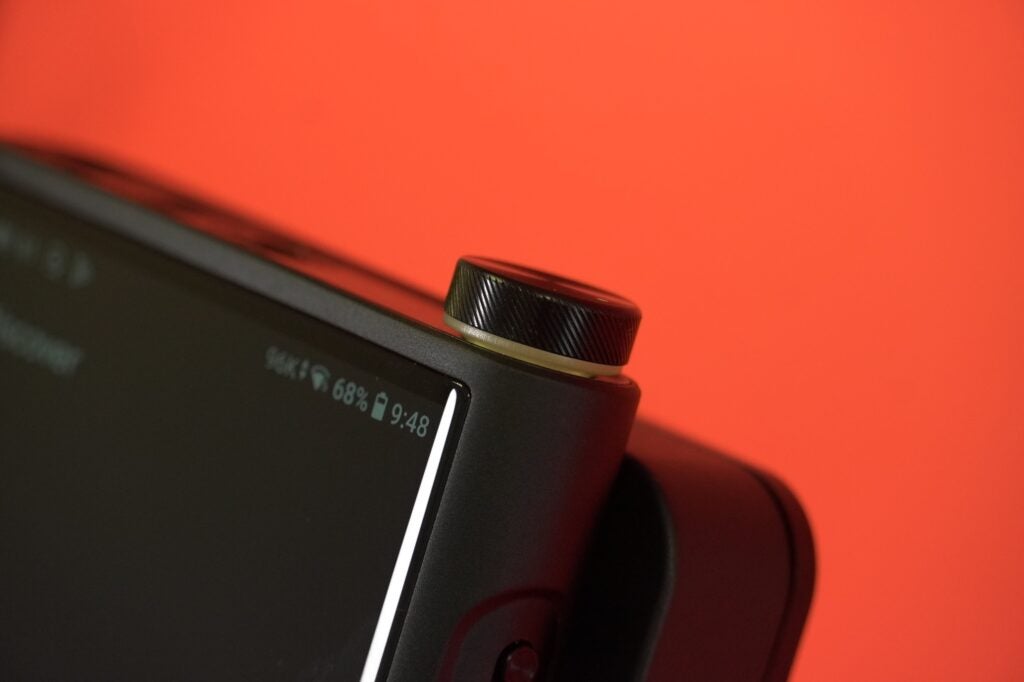
The dial is a lovely way to control the volume, and you’ll also notice the built-in LED that changes colour depending on the file, which is an easier way of recognizing what’s playing.
The USB-C port and microSD input are located at the bottom. Surprisingly, the microSD is inserted via a tray like a sim card with a smartphone, the first of a few similarities with smartphones. You need a tool to eject it, and thankfully FiiO includes one in the accessories, which also include USB-C, USB-C to A cable, and an USB-A adapter.
One final aspect to mention is the M15S comes with FiiO’s DK3S heat dissipation dock. It’s not hard to assemble and rather clever in how it slots together, but more importantly, plug the USB-C cable and the fan sucks heat away from the device. Considering this is all included and not optional, it’s an unexpected touch.
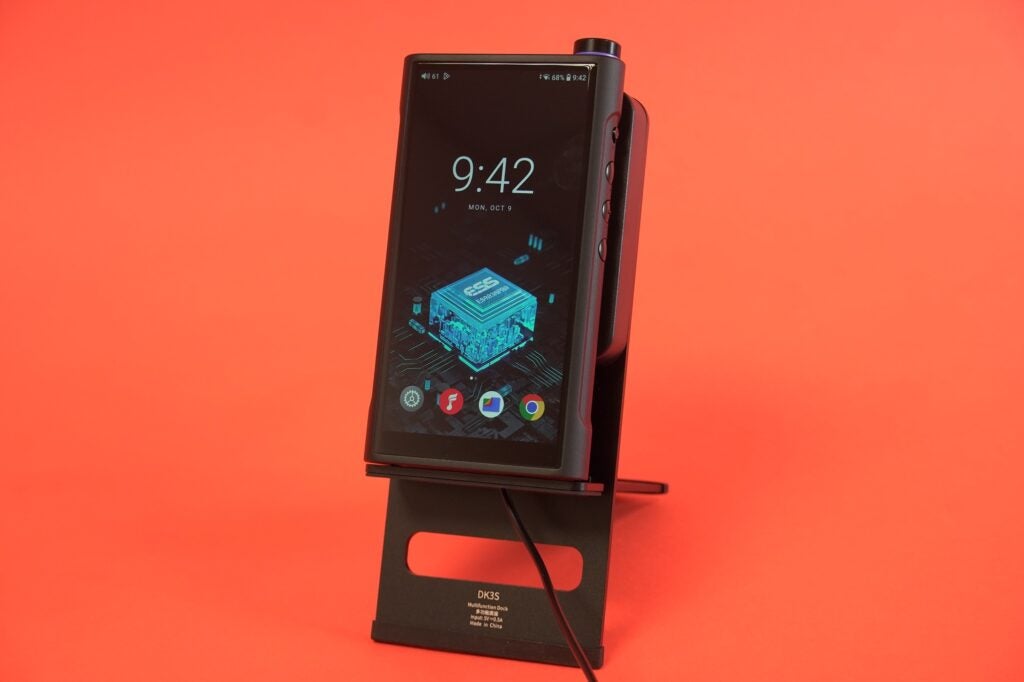
Features
- Zippy Android interface
- Array of connectivity options
- Up to 2TB microSD storage
The specification covers similar ground to the FiiO M15S, though of course there are a few upgrades. The DAC is a dual ESS ES9038PRO configuration and considering it is used for desktop DACs, that’s an indication of how much power it packs.
Audio is passed through FiiO’s 4th Gen FPGA (Field Programmable Gate Arrays) with phase-locked loop technology and paired with two Japanese NDK femtosecond crystal oscillators, which all sounds like techno-babble, but are there to extract a purer sound.
The chipset is a midrange Snapdragon 660, but RAM has been upgraded to 4GB. Like the M11S, using the touchscreen is swift with no lag noted. In fact, I found it zippier and more responsive than the Astell&Kern SR35.
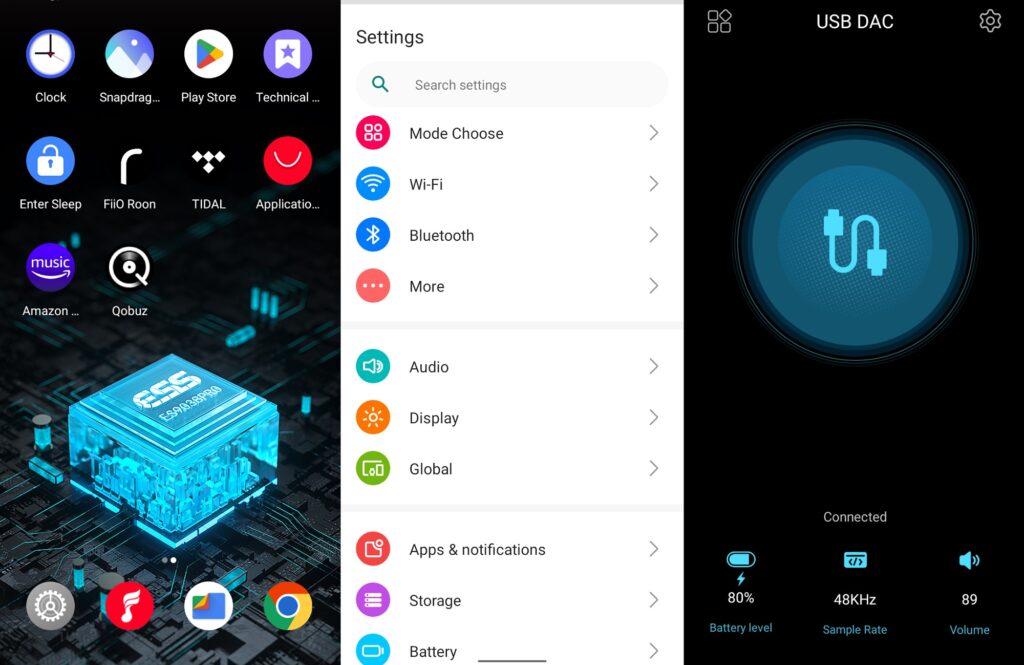
Android OS is another area where the M15S feels like a smartphone as it offers the full Android 10 experience with a few necessary customisations such as bypassing Android SRC (Sample Rate Conversion) for higher quality playback. You can download the likes of Netflix and Prime Video, which feels a little odd for a device primarily about music, but the screen is good enough to watch content, albeit stripped of HDR support.
The Android interface is one of six you can choose from, with the Pure (or FiiO) Music interface, Bluetooth receiving, USB DAC, AirPlay, and Roon Ready modes that makes the FiiO M15S a streaming Swiss Army knife of a device. There’s also MQA support, though with Tidal moving away from MQA it’s not as essential as it was.
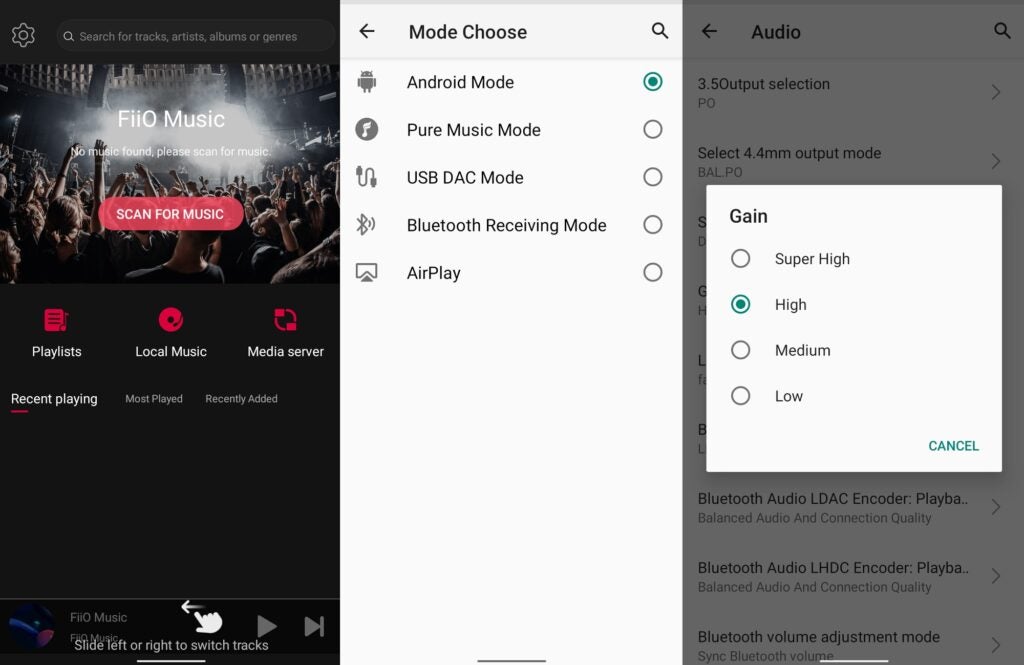
Bluetooth 5.0 is supported and the M15S can receive Bluetooth signals in the following formats: SBC, AAC, aptX, aptX HD, aptX Low Latency, LDAC, aptX Adaptive; as well as transmit in SBC, AAC, aptX, aptX HD, LDAC, and LHDC. Wi-Fi connectivity comes in 2.4GHz and 5GHz flavours.
File support is up to 32-bit/384kHz and DSD256 (up from the M11S’ DSD128), and there are five levels of gain to choose from in Ultra High, Super High, High, Medium, and Low.
Internal storage is boosted to 64GB, which can be expanded with microSD cards up to 2TB.
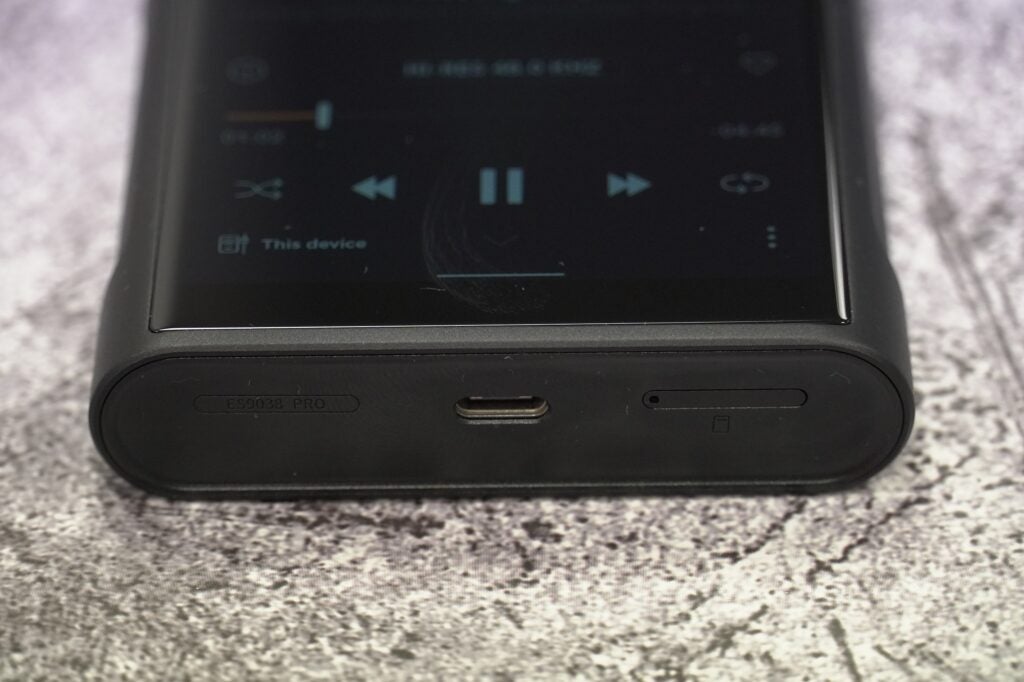
With its 6200mAH battery, FiiO says it can be used for 9 to 10.5 hours of use but gain, volume, screen use and the output used will all factor in terms of battery drain.
In the tests I carried out the battery fell from 95 – 78% in two hours, that’s about 12 hours in total with Gain at its High setting and volume at 40.
Performance
- Warm but balanced sound
- Not the most insightful presentation
- Good USB-DAC performance
The FiiO R7 desktop amplifier and M11S portable player both delivered sound in a neutral manner. The M15S takes its sound towards the warmer end of the spectrum but still puts in what I’d deem as a balanced presentation.
That said, up against the similarly priced Astell&Kern SR35, there’s no doubt in my mind the SR35 is the sharper, detailed, and more precise performer of the two.
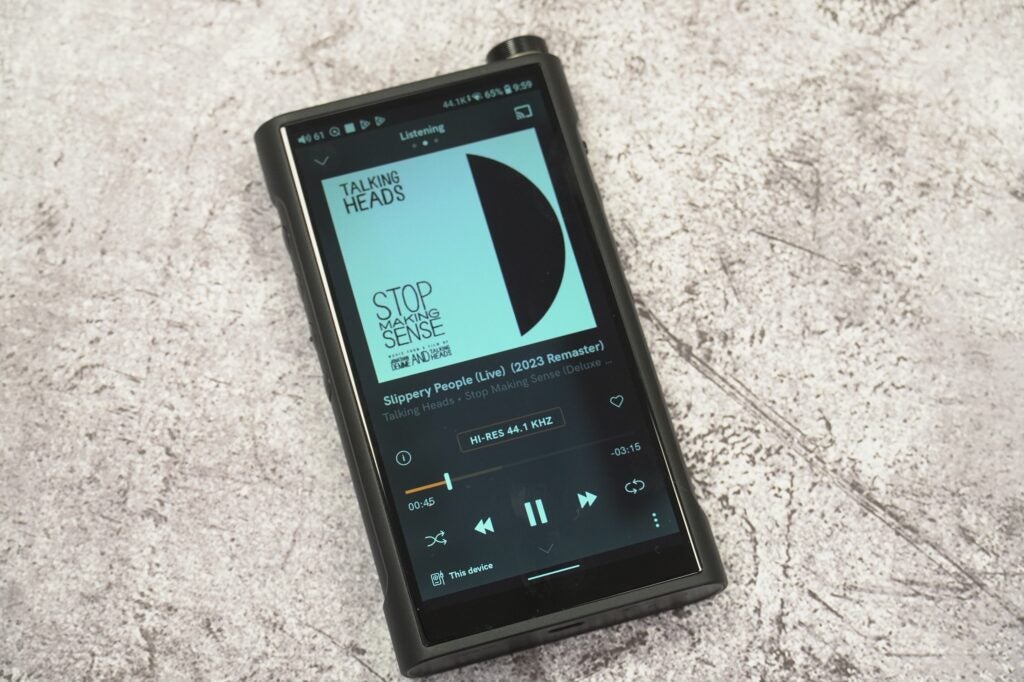
With Ezperanza Spalding’s I Know You Know (through a Campfire Andromeda IEM), the SR35 describes the drumbeats with clarity and detail. The strands of the track – from Spalding’s voice to the instrumentation – are better separated on the Astell&Kern, which allows for each part to be heard with more clarity.
The SR35 is also punchier, low frequencies hit with more assertiveness, while at the top end of the frequency range the FiiO isn’t as bright or as sharp, sounding rolled off – it makes for a less insightful read of the track compared to the Astell&Kern. While the SR35 wastes no time digging into and revealing the intricacies of a piece of music, the FiiO is more laid-back, allowing the listener to observe the music in front of them.
But there are times where the M15S’ warmer approach reaps welcome benefits. Listening to Jorja Smith’s album flying or falling on Qobuz (with Austrian Audio Hi-X65 cans), and the tracks are presented spaciously, the warmness of the FiiO overrides the Hi-X65’s crisper character. It does mean those highs aren’t pitched quite as sharp, nor is the midrange expressed with much punch; but the smoothness and richness of Jorja’s voice is brought out well.

With Raveena’s Headaches there’s a similarly lax vibe without much dynamism, but the soundstage is spacious, and the warmth adds to the track’s soulful feel. I prefer the FiiO’s tone with voices than I do the SR35 – they sound more natural and smoother, and there are times where the SR35’s more vivid approach feels a little too taxing; lots of energy and excitement whereas the FiiO’s gentler approach is calmer and relaxing.
The bass is rather tempered, surprisingly so, hitting with not as big a thud nor as much depth as I expected. I do like the balance that the FiiO goes for though, warm and rounded bass that’s easy on the ears.
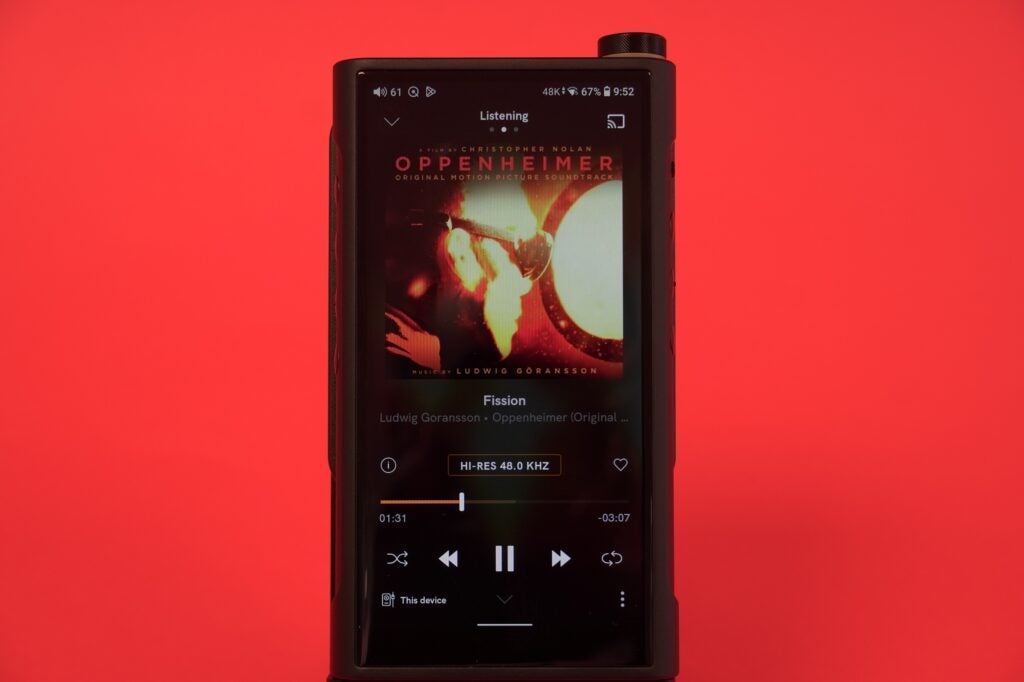
And how does it compare to the M11S? It’s certainly warmer in tone, bass is richer, and it resolves detail better with more sharpness in the high frequencies. The soundstage takes on a bigger, wider presence, and there’s a little more grunt behind the dynamic parts in music. The M15S sounds better in every facet.
Plugged into my laptop and enabling the USB-DAC feature, the FiiO M15S’ character isn’t altogether different – it’s an enhancement and refinement of its sound.
Music sounds slightly larger, energy levels are upped, and it sounds cleaner and refined. The differences can be subtle, but of the ways you can listen to music on the M15S, the USB-DAC option is the most articulate.
Latest deals
Should you buy it?
A well-featured, Android music player
Don’t think your Android smartphone cuts it in terms of sound quality? This DAP features more character (sonically) and versatility to become a part of your home setup.
You want more fidelity
The FiiO’s warm but balanced soundscape isn’t as insightful or revealing as the Astell&Kern SR35, which is also less expensive.
Final Thoughts
Though the M15S is better than the M11S, it only gets 4 stars (out of 5) compared to the latter’s 4.5 stars, and that’s principally because of the jump in price and its Astell&Kern competition. But don’t let the rating take away from an accomplished portable music player.
It is stocked with features, has a lovely design, and an entertaining audio performance. I do find its Android integration better in terms of zip and responsiveness than the Astell and Kern SR35, but it doesn’t sound as good, nor is it as portable. Another ding against it is that it is considerably more expensive.
As an all-round package, FiiO has come up with another enjoyable player with plenty of charm and a warm sound that has mainstream appeal. Those after more fidelity should check out its Astell&Kern rival, though.
How we test
We test every portable music player we review thoroughly over an extended period of time. We use industry standard tests to compare features properly. We’ll always tell you what we find. We never, ever, accept money to review a product.
Find out more about how we test in our ethics policy.
Tested across several months
Tested with real world use
Battery drain performed
FAQs
The FiiO M15S supports up to DSD256, 24-bit/352.8K DXD, APE formats up to 24-bit/384kHz, Apple Lossless up to 32-bit/384kHz, AIFF, FLAC, and WAV up to 32-bit/384kHz, WMA Lossless up to 24-bit/192kHz, as well as MQA, MP3, OGG, and AAC.



